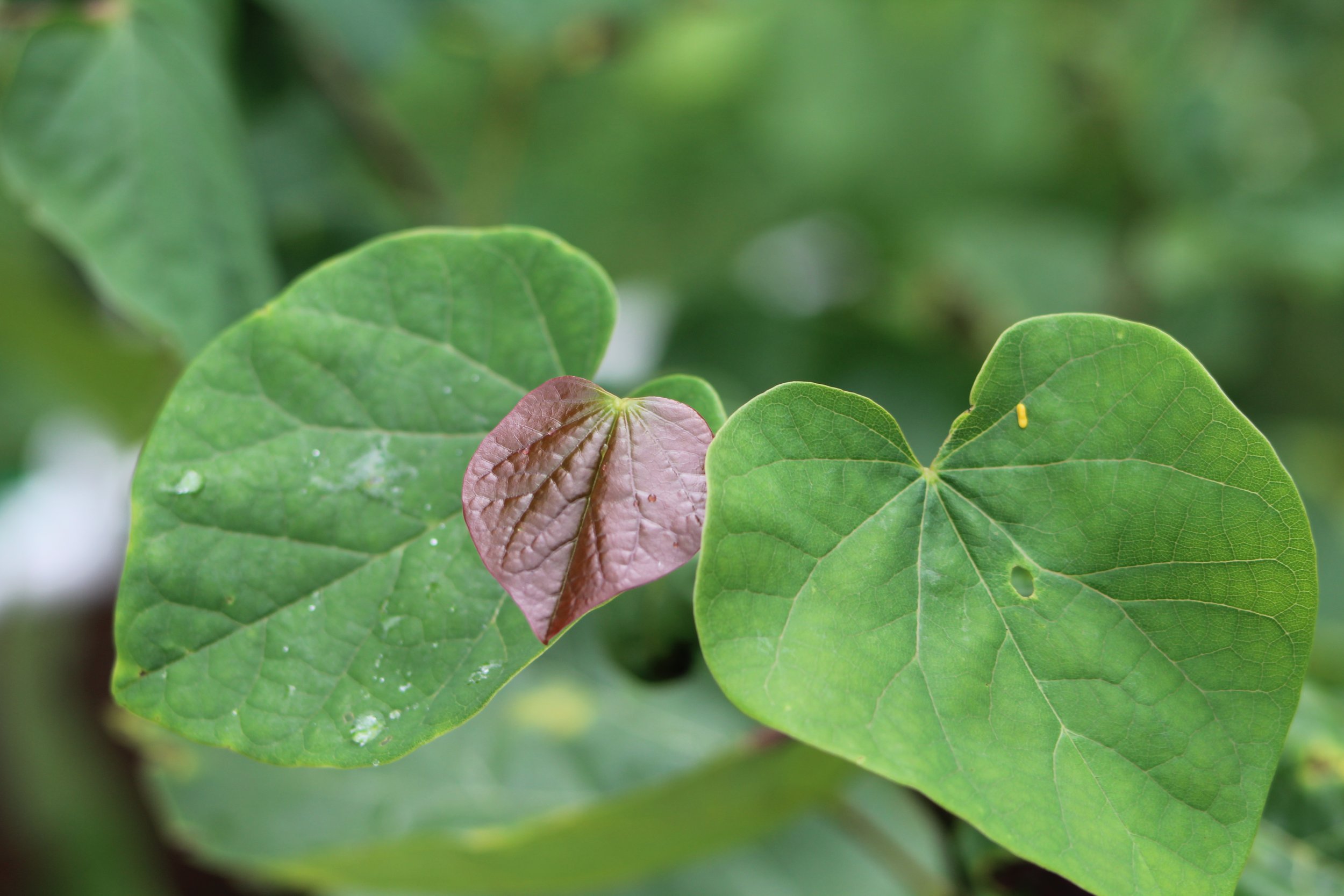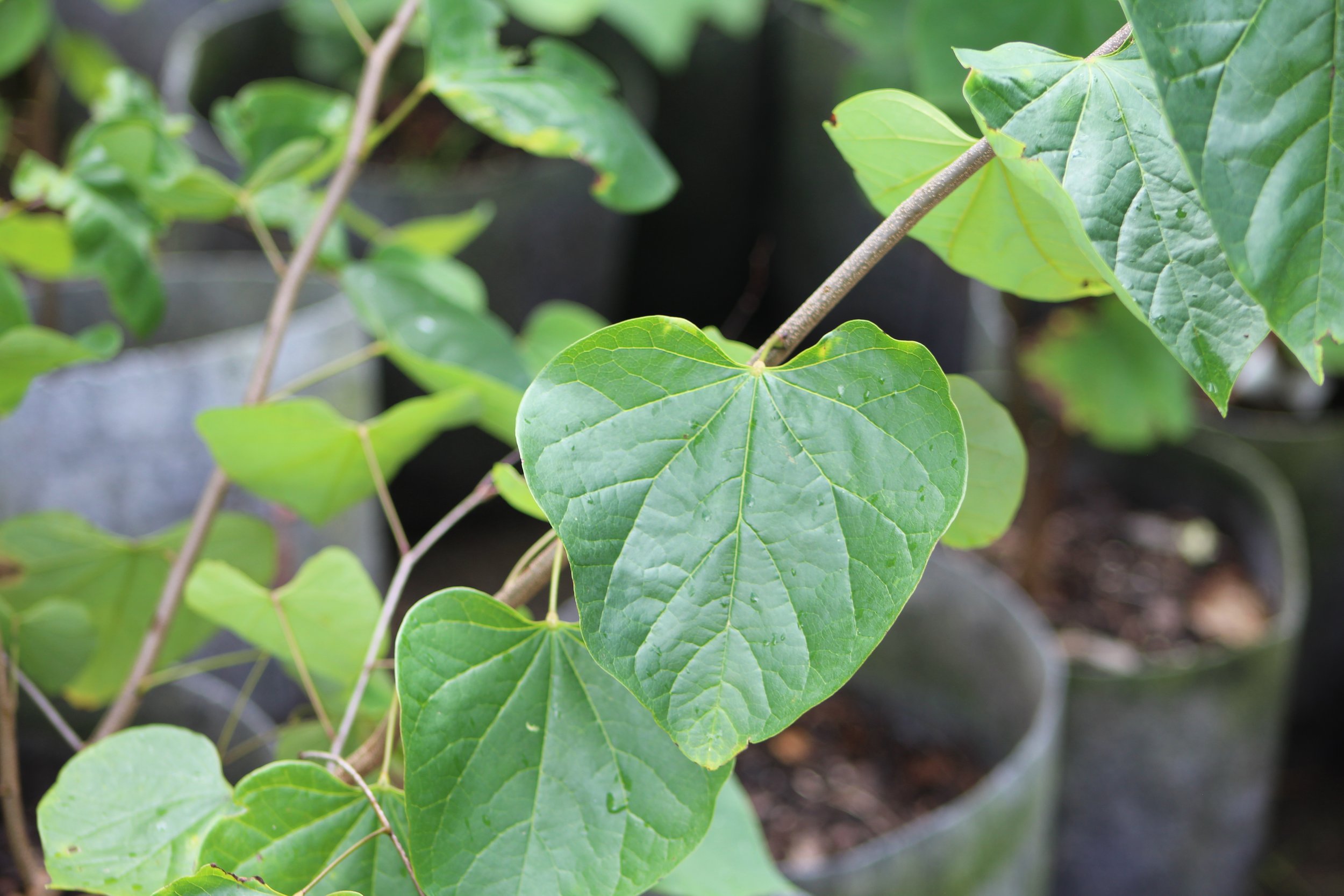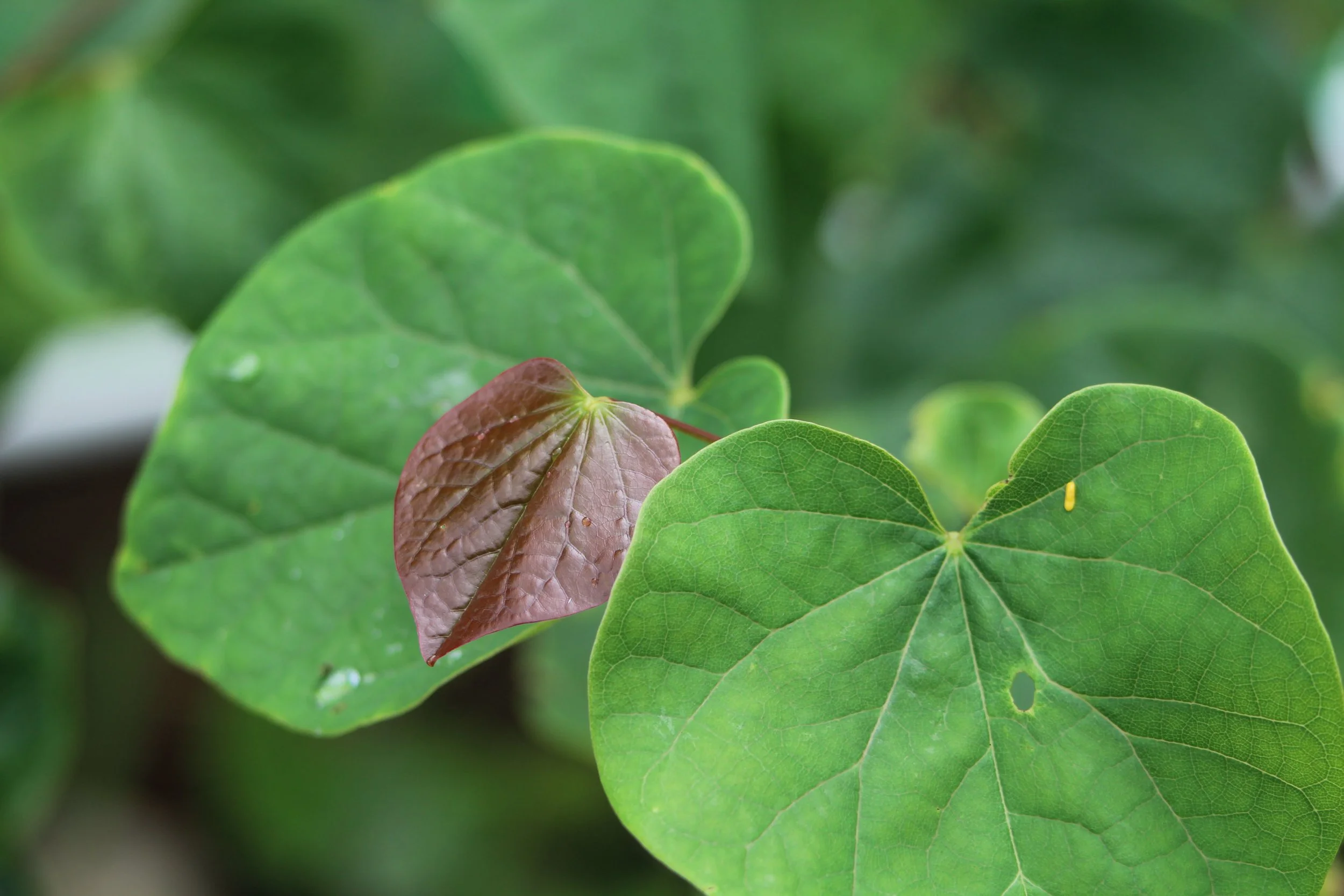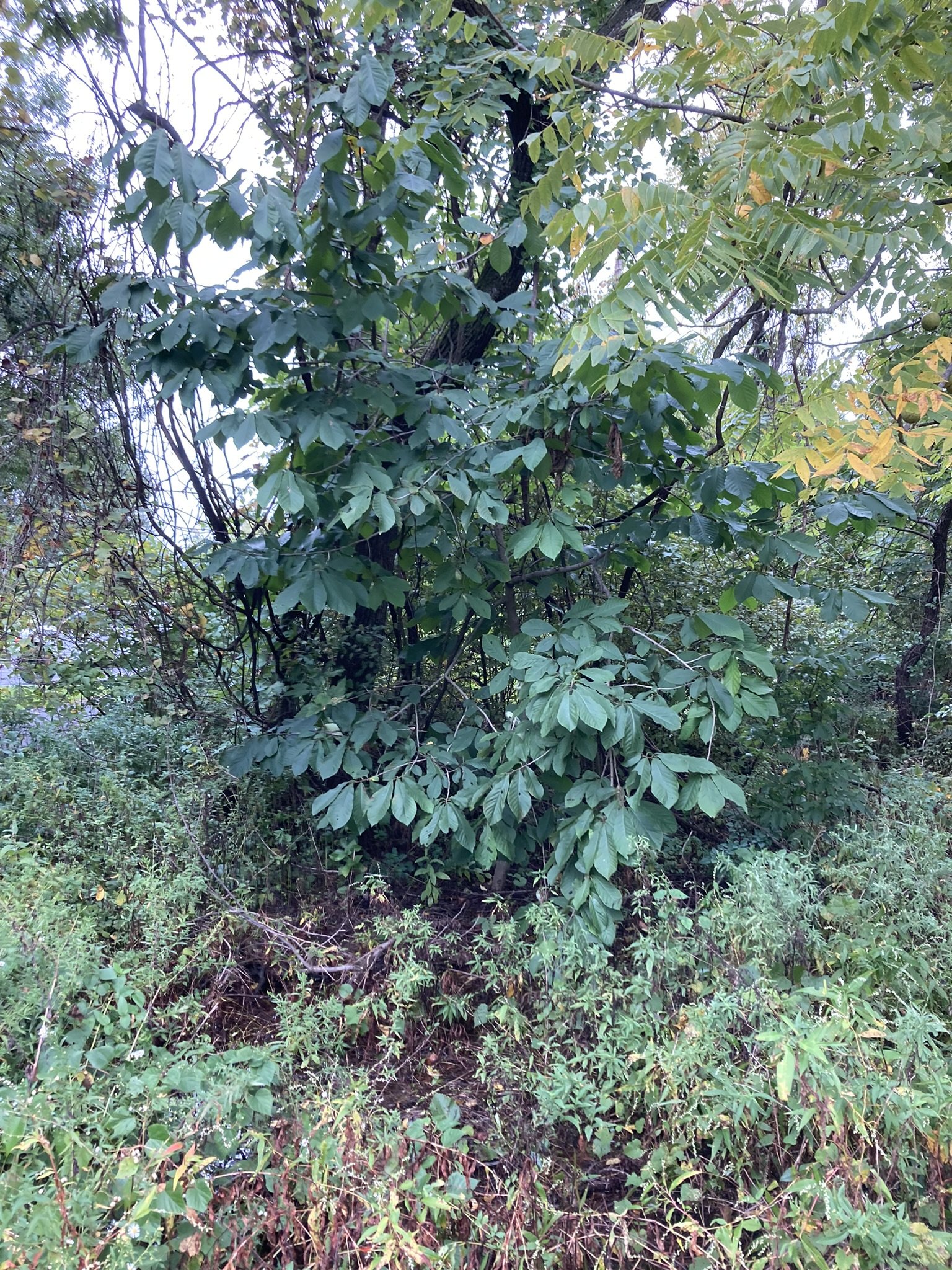Native Range
The native range for the eastern redbud is very expansive, from the Atlantic Coast between NJ to FL, then west to as far as Kansas. It expands a bit further southwest from there, covering much of Texas and even into parts of Mexico.
Due to the redbud’s preference for neutral/alkaline soil, it is not as common on the Atlantic Coastal Plain, preferring the piedmont and other moist upland areas within it’s range, especially on limestone and other alkaline type soils.
Some consider the redbuds on the western and southern end of this range to be a different subspecies, as that population is better adapted to the dryer and harsher conditions (more drying wind and intense sun). It’s interesting to note that those Redbud populations have smaller and thicker leaves, with more efficient stomata for holding onto moisture better.
Growing Conditions
You can find the Eastern Redbud tree growing along the edges of woods anywhere within it’s range. This is an understory tree that likes moisture and shade, but can thrive in full sun as long as it has access to adequate water. Conversely, it cannot handle flooding, and prefers wet but well draining soils. Older tree prefer more sunlight as they have deeper roots to access more water, but as still tolerant of some shade. In general, it is hardy from zones 4 - 9.
Interestingly enough, it likes the same kind of soil as Chinquapin Oaks - well draining and slightly acid to alkaline. (Preferring about 7.5pH and up). In addition, the soil cannot be pure sand. The Eastern Redbud really like at least some clay or other fine material to hold onto moisture and nutrients for it’s roots.
All that said, the reason why the Eastern Redbud’s range is so large is that it can really handle a wide range of soil and environmental conditions. This is also the reason why so many cultivars have been selected from this species as landscape trees, because they can survive the harsh suburban conditions where they are plants. They can even handle a bit of nutrient deficiency in order to get a leg up on any surrounding competing trees.
Identification
The Eastern Redbud’s leaves are fairly distinctive. During the summer, they have dark green heart-shaped leaves on mutli-trunked medium sized trees with graceful branches.
During the winter, the small trees have very distinctive zig-zag small branches that are easy to identify once you have seen a few.
Most strikingly, once a redbud reaches between 4-7 years old, it will start to flowering deep pink perfect flowers all along it’s branches in the spring.
Then, during the fall, the seed pods (which look like bunches of large flat green beans) break open to feed the birds and local wildlife.
Flowering & Reproduction
Redbuds flower in early spring before leaves start growing, usually with deep red flowers that can range from purple to (rarely) white. The flowers cover the old branches and trunks of the tree in clusters of 2 to 8, and are usually pollinated by bees and other insects. The flowers are self pollinating so no other nearby redbuds are required for fruiting.
By mid-summer, the seed pods will be full sized and then start drying into brown to reddish-brown pod clusters that will stay on the tree throughout fall and winter.
Seeds have a very hard coat, and must be both scarified and then stratified for at least 2 months of winter temperatures. Without scarification, seeds have been know to stay dormant for many years.
Ecology
The seed pods are food for many birds like the bobwhite quail. pheasants, goldfinch, and others. Birds open the seed pods to eat the bean-line seeds within.
Deer have been known to browse on redbud leaves of young trees.
The flowers have been recognized as an important food source for native bees.
Food
The flowers of the Eastern Redbud can be eaten, either put into salads or fried. They are slightly sour and high in vitamin C.
Young pods can be boiled or sautéed .
Home Landscaping
The Eastern Redbud is a fantastic landscape tree. Even if you ignore the extensive beautiful red/purple flowers or the heart shaped leaves, the shape of the tree itself is graceful. The typical tree is multi-trunked, and with pruning can easily take on a “windswept” or ornamental looking canopy, somewhat like a life-size bonsai!
Typical size is that of a medium to small tree, with a maximum mature height up to 25-30 ft with 25ft spread. However, this is very dependent on pruning as allowing for multiple trunks tends to result if smaller, more landscape friendly tree.
It is also drought resistance once established and has few pests to worry about. It’s even good at dealing with nutrient poor soils, adding to it’s flexibility in many locations with many different management styles.
The tree is also short lived, typically around 30 years
History & Traditional Use
The Alabama, Cherokee, Delaware, Kiowa, and Oklahoma were among the Native American tribes that used eastern redbud. The bark was made into a tea to treat whooping cough. Cold infusions of the roots and inner bark were used to treat fevers and congestion. An infusion of the bark was used to treat vomiting and fever. During winters, the plants were used for firewood. Because it is one of the first plants to flower in the spring, the blossoming branches were brought into the homes to “drive winter out.” Children were “fond of eating the blossoms” of eastern redbud. (2)
A related species to the Eastern Redbud is the European Redbud (Cercis siliquastrum), commonly called the Judas Tree. This unique name comes from the myth that Judas Iscariot hung himself out of remorse from a European Redbud, after which the white flowers turned red from the act. Due to the Eastern Redbud’s similar appearance to its European cousin, the name Judas Tree has been used as well.
Credits and more information than you could ask for!
US Forest Service (https://www.srs.fs.usda.gov/pubs/misc/ag_654/volume_2/cercis/canadensis.htm)
USDA NRSC (https://plants.usda.gov/DocumentLibrary/plantguide/pdf/cs_ceca4.pdf)
USDS Fire Effects Information System (https://www.fs.usda.gov/database/feis/plants/tree/cercan/all.html)
Lady Bird Johnson Wildflower page (https://www.wildflower.org/plants/result.php?id_plant=ceca4)
Kentucky Forestry and Natural Resources Extension (https://www.uky.edu/hort/Eastern-Redbud)
Trees with Don Leopold (https://www.youtube.com/watch?v=dXGZ6_yw1_Q)
University of Florida IFAS (https://gardeningsolutions.ifas.ufl.edu/plants/trees-and-shrubs/trees/redbud.html)
bplant page (https://bplant.org/plant/575)
Photo Credits
Main Product Pictures
Photo #2 - BONAP Map, https://bonap.net/MapGallery/County/Cercis%20canadensis.png ,http://www.bonap.org/MapKey.html
All other Photos by The Naked Oak Tree Farm, free to use by anybody for any reason.
.








































